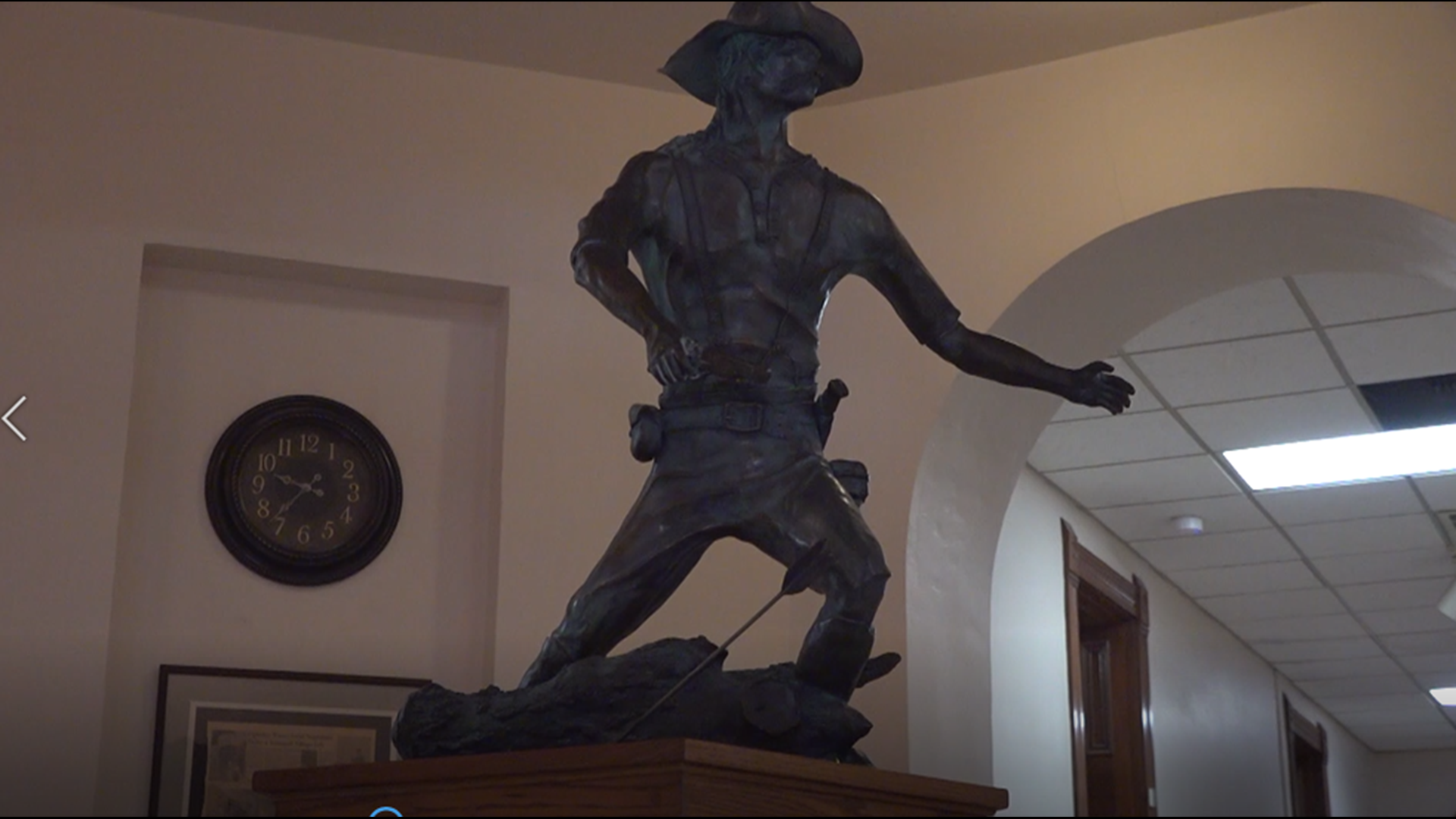CORYELL COUNTY, Texas — Eight years after skeletal remains were found buried in a slave cemetery in Falls County, the mystery still remains on whether or not it’s the body of a Texas Ranger who has been lost in history for more than 150 years.
James Coryell was killed by Native Americans in May 1837, near Fort Milam in Falls County. Coryell County was named after him in 1854.
How he died is still debated to this day. Although there are signs pointing to where his body was buried, not even DNA testing can prove that it’s actually him.
A statue of James Coryell sits inside the Coryell County Courthouse.
“I’ve always heard about great uncle James, who had went to Texas and was killed by Indians in 1838," Coryell's great-great nephew, Jim Kirker, said. "He was a Texas Ranger and Coryell County was named after him."
Kirker said his maternal grandparents told him Coryell left their family farm in Ohio to explore the San Saba silver mines with James Bowie.
He had a camp set up in Falls County and worked with several Texas Ranger companies. Kirker said other than hearing stories from his family, he’s also read about his ancestor in a few books.
“As I read through that, I saw a lot of myself in him sometimes because he had a sense of wanderlust and adventure,” Kirker said.
Legend has it Native Americans shot Coryell, then scalped him as he was getting honey from a bee tree. He was with two or three other rangers at the time, and they managed to survive the attack.
Coryell died a few days later.
The Texas Historic Commission said Coryell died protecting settlers, but Texas Ranger Historian Rusty Bloxom said Coryell’s legend grew more from folklore rather than documented facts.
Bloxom said other than being a ranger, there’s very little historians even know about him.
“He was involved in the Texas Revolution in 1835 and 1836," he said. "He was killed in May of 1837, probably on the 27th of May, but I’ve also seen it on the 21st of May. There’s a lot about it that’s kind of a grey area."
Bloxom said Coryell’s grave was lost, until oral histories of a former slave led researchers to a slave cemetery in Falls County known as Bull Hill. That’s where archaeologists uncovered skeletal remains in 2011 from what's believed to be Coryell's skull, all the way down to his ankles.
“Were these remains they found James Coryell?” Bloxom said. “There’s a lot of people who think it probably is. But there are some indications that are just as inconclusive as the DNA test that say this may have been buried at a later date.”
Archaeologists also found a piece of metal inside the rib cage. The Texas Historical Commission said it could be from the arrowhead used to kill Coryell.
“There’s a lot that remains a mystery,” Bloxom said. “As someone who has studied history my entire life, I actually kind of like that. There are some things that we can’t know.”
Kirker said there is no doubt in his mind that the remains in the cemetery are his uncle's, and he can almost feel a connection to him.
“I’m proud that I have him in my heritage and my history,” Kirker said. "I’m proud to be associated with James Coryell and Texas.”
There are no photographs of James Coryell.
The earliest known photograph to include a recognizable human form, was taken in 1838, the year after his death.
Historians said the statue of him, which sits inside of the Coryell County courthouse, was based on what his brother looked like when he was the age Coryell was at the time of his death.

